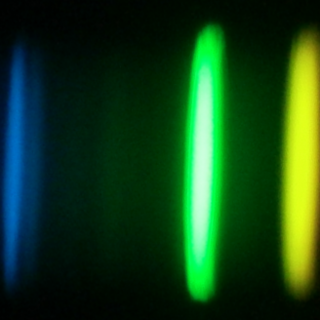Bibcode
Whitten, D. D.; Placco, V. M.; Beers, T. C.; Chies-Santos, A. L.; Bonatto, C.; Varela, J.; Cristóbal-Hornillos, D.; Ederoclite, A.; Masseron, T.; Lee, Y. S.; Akras, S.; Borges Fernandes, M.; Caballero, J. A.; Cenarro, A. J.; Coelho, P.; Costa-Duarte, M. V.; Daflon, S.; Dupke, R. A.; Lopes de Oliveira, R.; López-Sanjuan, C.; Marín-Franch, A.; Mendes de Oliveira, C.; Moles, M.; Orsi, A. A.; Rossi, S.; Sodré, L.; Vázquez Ramió, H.
Bibliographical reference
Astronomy and Astrophysics, Volume 622, id.A182, 18 pp.
Advertised on:
2
2019
Journal
Citations
54
Refereed citations
49
Description
Context. We present a new methodology for the estimation of stellar
atmospheric parameters from narrow- and intermediate-band photometry of
the Javalambre Photometric Local Universe Survey (J-PLUS), and propose a
method for target pre-selection of low-metallicity stars for follow-up
spectroscopic studies. Photometric metallicity estimates for stars in
the globular cluster M15 are determined using this method. Aims:
By development of a neural-network-based photometry pipeline, we aim to
produce estimates of effective temperature, Teff, and
metallicity, [Fe/H], for a large subset of stars in the J-PLUS
footprint. Methods: The Stellar Photometric Index Network
Explorer, SPHINX, was developed to produce estimates of Teff
and [Fe/H], after training on a combination of J-PLUS photometric inputs
and synthetic magnitudes computed for medium-resolution (R 2000)
spectra of the Sloan Digital Sky Survey. This methodology was applied to
J-PLUS photometry of the globular cluster M15. Results: Effective
temperature estimates made with J-PLUS Early Data Release photometry
exhibit low scatter, σ(Teff) = 91 K, over the
temperature range 4500 < Teff (K) < 8500. For stars
from the J-PLUS First Data Release with 4500 < Teff (K)
< 6200, 85 ± 3% of stars known to have [Fe/H] < -2.0 are
recovered by SPHINX. A mean metallicity of [Fe/H] = - 2.32 ±
0.01, with a residual spread of 0.3 dex, is determined for M15 using
J-PLUS photometry of 664 likely cluster members. Conclusions: We
confirm the performance of SPHINX within the ranges specified, and
verify its utility as a stand-alone tool for photometric estimation of
effective temperature and metallicity, and for pre-selection of
metal-poor spectroscopic targets.
Related projects

Nucleosynthesis and molecular processes in the late stages of Stellar Evolution
Low- to intermediate-mass (M < 8 solar masses, Ms) stars represent the majority of stars in the Cosmos. They finish their lives on the Asymptotic Giant Branch (AGB) - just before they form planetary nebulae (PNe) - where they experience complex nucleosynthetic and molecular processes. AGB stars are important contributors to the enrichment of the
Domingo Aníbal
García Hernández

Chemical Abundances in Stars
Stellar spectroscopy allows us to determine the properties and chemical compositions of stars. From this information for stars of different ages in the Milky Way, it is possible to reconstruct the chemical evolution of the Galaxy, as well as the origin of the elements heavier than boron, created mainly in stellar interiors. It is also possible to
Carlos
Allende Prieto